
Introduction:
During our childhood in Vancouver, “Harand” was a household name in our family, as my brothers and I overheard German conversations between our Mum and Granny, Viennese German being their mother tongue.
My brothers and I are unsure whether we ourselves ever met Irene Harand; perhaps when we were very very young, before our clear memories. Family photo albums only show Irene Harand visiting in our Granny’s Lynn Creek, North Vancouver home in 1941,’ 45and 1955, before we were born.
The latest recorded written visits I have of my Granny visiting Irene and her husband Frank in their home in New York City, were in 1960 and in 1967. The September 1967 NYC visit, a few months after the Six Day War, alludes to Irene Harand’s frail health and to the scars she bore from her earlier activism, but also to her and my Granny’s ongoing interest in world politics, at ages 68 and 73 respectively. ( see excerpts from AHA’s unpublished travel report: My Journey in Seach of My Lost Identity, 1967, at the end of this blogpost.)
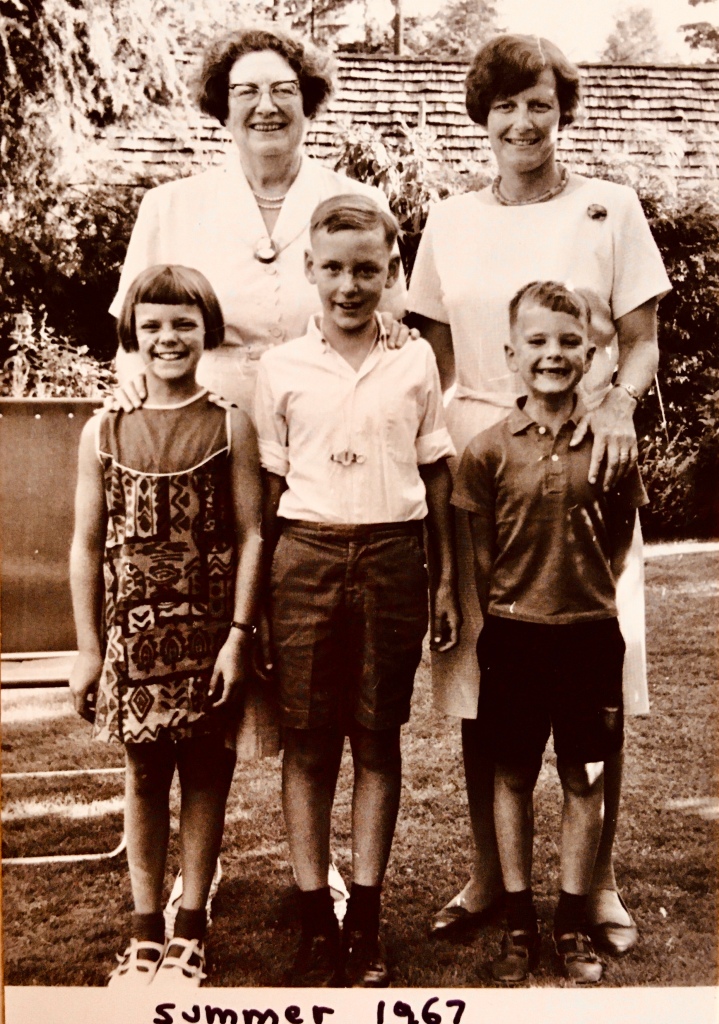
Regardless of whether we met Irene Harand or not, we children certainly had absolutely no idea of the dangerous but important work with which both our Granny and ”Harand” had been involved in during the 1930s in Vienna. As children, we knew our Granny’s strong hugs against her ”prickly” diamond brooch, her hearty laugh (often directed at her own foibles), and as someone who came to visit us weekly, Bon Ton pasteries in hand, and with whom we happily played dominoes and card games.
Our Granny (Anna Helen Aszkanazy/Askanasy, or AHA, for short), died on May 17th, 1970, at age seventy- six years, one day after my mother’s forty- ninth birthday and three days before my twelfth birthday. Granny’s ashes were scattered on the Pacific Ocean, according to her wishes.
Irene Harand died in 1975, and her ashes were carried back to Vienna and buried in a place of honour in the ZentralFriedhof cemetery.
Our mother did not dwell on the traumatic days of her own teenage flight or tragic losses, nor on Granny’s activism and work, and so it has fallen to me, decades later, through reading my grandmother’s prolific writings, to uncover and understand more of my heritage and presently, to focus in particular, on the contributing role of her good friend, Irene Harand.
My Granny was a very strong personality, and those of you who may have already sampled some of AHA’s writings, would likely agree with me that she vividly described her thoughts and feelings on paper. Aware of the unrelenting honesty with which AHA expressed herself, her notably sustained admiration of Irene Harand and their enduring friendship which she described in her memoirs, is therefore, to me, all the more heartwarming and inspiring to read.
Their deep bond was forged during the tense times of the 1930’s in pre- Anschluss Vienna, where they worked collaboratively to assist the early refugees fleeing the Nazi regime. This bond continued when they themselves as traumatized bereft refugees of Nazi terror, met up in London, England; a few months later, they were together at the time of the Évian Conference, July, 1938, where they along with their Women’s Organization for World Order, tried in vain, to speak up for the necessity of countries to open wide their doors to European Jewish refugees. Their friendship and collaboration continued in both Canada and USA as newly arrived refugees later in 1938, and into the early 1940’s, during which time they both advocated unceasingly, with small but not insignificant results, for increased admittance of refugees into both these spacious countries. For example, in 1940, Harand came from New York to Ottawa to help AHA advocate before the head of Canadian Immigration for the admittance of a few Jews that AHA could personally sponsor.
For a brief introduction to Irene Harand’s life, here is a portion of an article about her in encyclopedia.com. The link to the complete article is included below. It is worth reading in full!
IRENE HARAND (1900-1975)
Austrian leader in Vienna who attacked the evils of Nazism, anti-Semitism, and religious intolerance and was honored by Israel for her efforts. Born Irene Wedl on September 6, 1900, in Vienna, Austria; died on February 3, 1975, in New York City; daughter of a modestly well-to-do Roman Catholic father and a Lutheran mother; attended the School of the Desmoiselles Diwisch for two years; married Frank Harand, in 1919; children: none.
In the late 1920s, Irene Harand was a prosperous and happily married young woman when her innate sense of justice first drew her in the direction that was to change her life. The alteration began with a series of minor incidents seeming at first to have little to do with the often brutal world of Austrian politics. She had simply become concerned about the plight of an aged noble she was acquainted with, who had lost his fortune and then been refused assistance by his son who held the family castle and lands. Seeking justice on behalf of the old gentleman, Harand consulted a number of lawyers and paid a substantial amount in fees without seeing anything accomplished. Then she consulted Dr. Moritz Zalman, a well-known Jewish attorney who showed enthusiasm for the case. When the question of fees was raised, Zalman told Harand that if she could give of her energies to help the old man, he could volunteer his legal skills.
Years later, Harand explained this gesture as a turning point in her thinking. Although she had never acted as an anti-Semite, she realized that she had unconsciously held the notion, almost universal within Viennese Gentile society, that Jewish lawyers were avaricious and unscrupulous, and she had consulted only non-Jewish attorneys until she approached Zalman. “I blushed when I thought that a Jew … was ready to serve a non-Jew as no Christian I had met had been willing to serve,” she said. “I determined then and there to give my life to wipe out this shame antisemitism was bringing upon Christians and Christianity.”
“Harand, Irene (1900–1975) .” Women in World History: A Biographical Encyclopedia. . Encyclopedia.com. 24 Jan. 2022 <https://www.encyclopedia.com>.
How my Grandmother’s and Irene Harand’s spheres connected:
My maternal grandmother, Anna Helen Aszkanazy (AHA) was speaking at an evening conference ( her topic was birth control promotion), and it was during that evening that she had, unknowingly, become an inspiration to Irene Harand, who attended the lectures that night in 1932 and heard my grandmother speak.
“Once an organization called “Kleinrentnerbewegung” (Small Pensioners Movement), run by a Dr. Zalman, invited me to speak. It was a venture called “Gesprochene Zeitung” (Oral Newspaper), and Dr. Zalman was a member of the staff. [there were many speakers that evening] When my turn finally came, I spoke spontaneously and with my usual passion, for I knew the subject so thoroughly, I could have done it in my sleep. Despite the overwhelming crowds, I experienced a feeling of futility, and yet, it was on this very occasion that I inspired a woman, who later became my best friend, to speak publicly, exactly as Agnes Macphail of Canada, unknowingly, had inspired me in Prague.” [ Book 3.1; My Recollections, by Anna Helen Aszkanazy]
[ AHA was inspired to learn public speaking skills at the age of 35, when she attended a meeting of the Women’s International League for Peace and Freedom in 1929 and was impressed by Agnes Macphail’s speech, Canada’s first woman Member of Parliament!]
“Dr. Zalman’s then colleague and secretary, Irene Harand, sat next to him and, as she often told me later, he had turned to her and said, “See, Frau Harand, you should speak like this woman.” To which Harand hopelessly shook her head and replied, she would never manage it. But Dr. Zalman pressured her to do so by encouraging her, over and over again, and Irene Harand became a speaker who was a thousand times better than me. I could only motivate my audience to clap, but she could bring her audience to tears––including me!”
[ Book 3.1; My Recollections, by Anna Helen Aszkanazy]
Shortly after, AHA was invited by Frau Irene Harand to attend an anti- Nazi movement meeting, where Harand spoke, announcing a newspaper, “Justice”, and looking for board members to join, as well as promoting the distribution of an already printed anti- Nazi pamphlet. The gathering was held in the law offices of Moritz Zalman:
“ …..in 1933, I had received an invitation from Frau Irene Harand to attend a gathering at Dr. Zalman’s offices. There I found, among others, the chief rabbi of Vienna––most of those present, including Dr. Zalman, were Jews. He opened the meeting with the statement, that something had to be done against the Nazis; he was thinking of starting a weekly paper, but as a Jew, he could not possibly be the chair–– an anti-Nazi movement must come from Christians. He introduced Frau Harand as a Catholic who had given him the idea of the newspaper and the idea of fighting racial hatred in general. Frau Harand stood up, and I saw an elegant, beautifully dressed, very interesting woman, who looked like a cross between a fashionable lady and a medieval saint. When she spoke, hesitantly at first, then with increasing vim and vigour, I forgot all else and listened in fascination…. Finally, she invited those present to join the board of the newly founded newspaper. She had written a short work titled “So, oder So” (Like this, or Like that), on one side the scales of justice, on the other the swastika. Each of us took a pamphlet, but I told her right away that I could not actively participate in the movement because my spare time was split between my work with the stateless, for the Women’s League and the Call Club, in addition to my household and children. Plus, I was writing.” [ Book 3.1; My Recollections, by Anna Helen Aszkanazy]
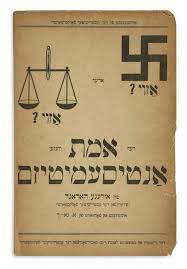
“ She said that since she had no children, she had more time. I invited her to give a lecture about her ideas at our Call Club [ AHA Led this group which organized twice weekly classes where women were taught to public speak and to be politically educated and involved.], which she gladly accepted; and it was on that occasion she told me how I had first inspired her to attempt public speaking. Her talk at the Call Club was a great success and, of course, she founded her weekly newspaper, “Die Gerechtigkeit” (Justice). The newspaper’s slogan was “World Movement Against Racial Hatred and Human Suffering.” Many women in our circle were critical of Irene Harand because, to our minds, she generated a much too conspicuous cult following; but I knew it was Dr. Zalman, and not she, who encouraged this. I became good friends with Irene Harand, but we were only able to meet over lunch in a café, usually at “Café Museum,” because she was overly busy and her evenings were filled with meetings and briefings for the newspaper. In addition, she had organized more and more refugee aid for anti-Nazis from Germany: soup kitchens, warming shelters, etc. But since Dr. Zalman’s party, who actively helped the “Kleinrentner Bewegung” (Small-Pensioners Movement) and had about fifty thousand followers, their help was very useful….
One day she phoned me. ” AHA”, she said, ” I am Catholic and am helping Jews; you are Jewish, now be so kind and help Gentiles.” That was how I became an expert on the plight of right- minded Gentiles (refugees) who opposed the freak Schickelgruber.” ( Hitler’s birth name/ nickname used by Churchill and AHA). I asked her to send me Christian refugees. From then on, the phone rang non-stop….we did not know if we were coming or going, but this is how we received first-hand reports of the goings-on in Nazi Germany. We saw wounded people who had been beaten up in concentration camps or who were injured during their escape.”
[ Book 3.1 of My Recollections, by Anna Helen Aszkanazy
The original German manuscript, as well as a link to the English translation, are found in the Collections of the Vancouver Holocaust Education Centre.]
https://collections.vhec.org/Detail/entities/11172
https://collections.vhec.org/Detail/objects/9346
Irene Harand went on to write a book, published locally in Vienna in 1935: “Sein Kampf, an Answer to Hitler” in which she systematically refuted each piece of Hitler’s outrageously anti- Semitic statements in his book “Mein Kampf”. ( which, unfortunately, is now available online in many languages and becoming horrifyingly popular!)
Harand’s book is available in German on Amazon.com.
https://www.amazon.com/Sein-Kampf-Antwort-Hitler/dp/3900766169
There is an English translation also, but I’m not sure how to access it…
http://web.nli.org.il/sites/NLI/English/library/reading_corner/Pages/HisStruggle.aspx
In the 2017 Haaretz article below are some quotes from her book, as well as some biographical details.
The Anschluss, March 12, 1938, and following:
Back in March 1938, Irene Harand was out of the country traveling in France and England (speaking to officials about her concerns for about the impending Nazi invasion of Austria), when the Anschluss happened. Here are some pages from my Grandmother’s memoir, written in her own imperfect English, about her meeting up again with Harand in England in April 1938. The context: my grandmother and her two teenage daughters had just arrived in England in April after fleeing Vienna into Switzerland the morning of March 13th, after the Nazis invaded on Friday afternoon, March 12, 1938. My grandfather did not escape in time and was arrested by the Gestapo while in their family apartment on March 15; after a failed extortion attempt, he was tortured and murdered in the Vienna Detention Centre, on March 17, 1938.

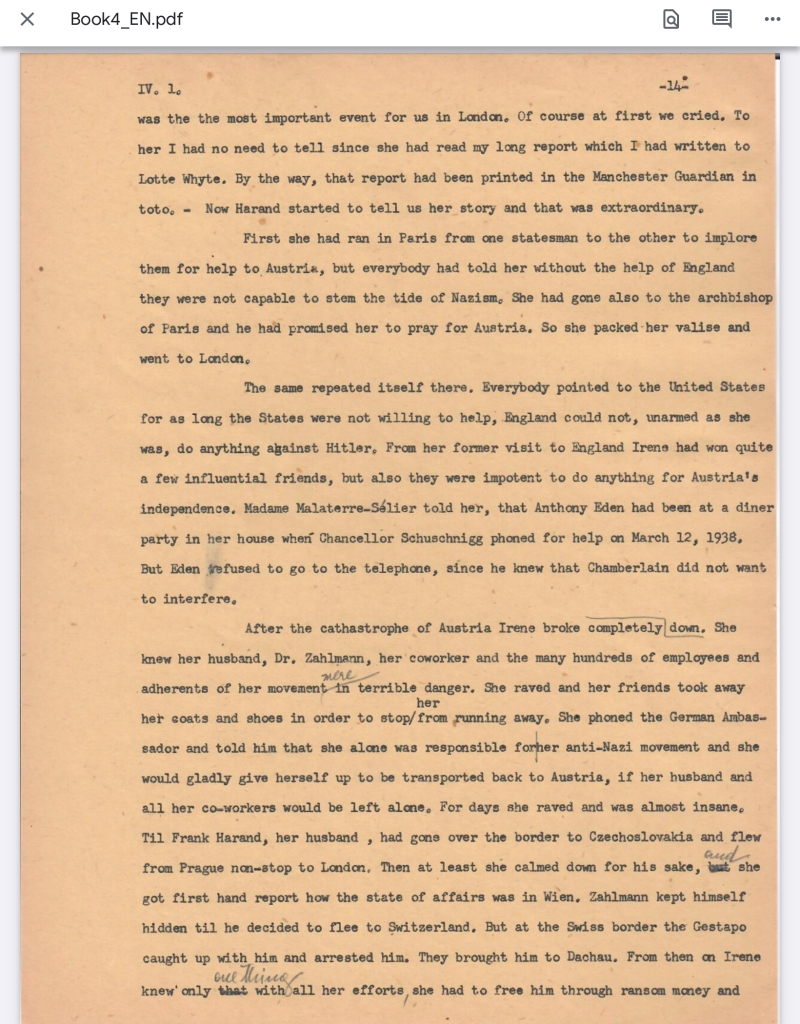

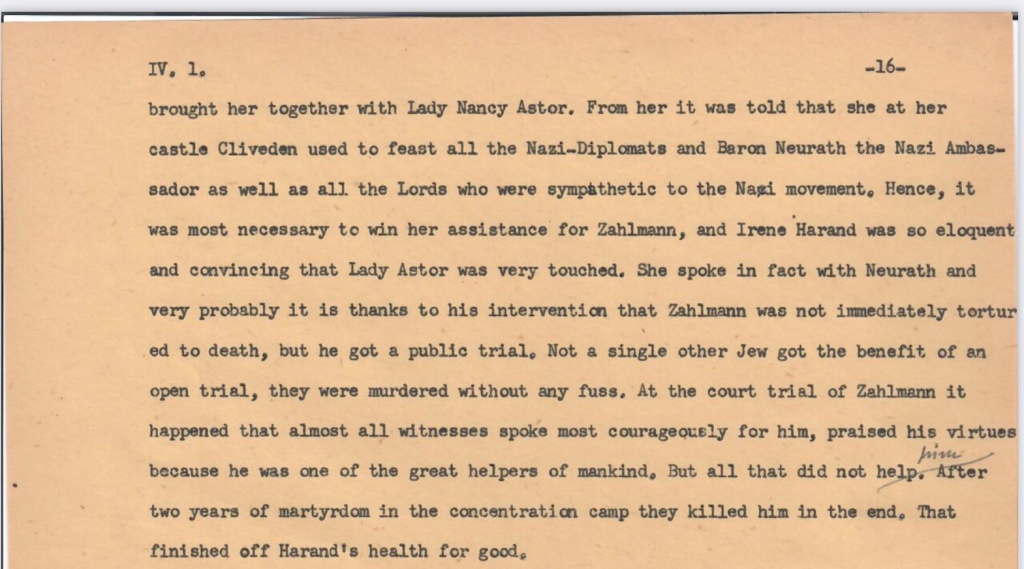
My Personal Reflections:
I wrote this post originally for International Holocaust Remembrance Day, 2022, because I wanted to highlight Irene Harand’s work on behalf of the Jews in 1930’s Europe, and her open and courageous fight against anti Semitism and the Nazis. I also wanted to remember her boss, Moritz Zalman and millions of other Holocaust victims.
I also specifically want to strongly stress the concept lived out in the stories above, that people (I/ we!) must look out for “the other”, as Harand did for the Jews, and as my grandmother did for the stateless and Christian refugees, as well, of course, for other Jews.
And, I appreciate, as did my grandmother, that Irene Harand challenged her to do precisely that!! Look out for and speak up for “the other”, not just for one’s own community. I heartily believe in this approach; without it, if we look only to our own personal, family, national interests, there will be no healing or thriving for our hurting world, our global village!
Additionally, for both International Women’s Day, March 2022, and Women’s History month, I wish to highlight the concept of women challenging each other to become involved in good works for the sake of peoples’ life and wellbeing. Let us not waste our lives, our abilities and possibilities, in the short time we’ve been given! Let us be upstanders rather than bystanders!
My grandmother herself had been challenged back in 1929 by Rosika Schwimmer of the Women’s International League for Peace and Freedom when they met in Prague. Schwimmer challenged my grandmother, who had travelled there to ask what she could do to help the world ( age 35): ” Look after the stateless!” And my Granny educated herself and did!!
Recently, as I have had more time to read and to reflect upon my maternal grandmother’s memoirs, especially in this season of our world history, the woman, Irene Harand, my grandmother’s ”best friend”, has both caught and increasingly held my attention. I am so thankful that my Granny recorded so much of Harand’s life, their meeting and their enduring friendship and their dedicated work that bonded them together during those terrible years. I am thankful that Harand has been recognized Righteous among the Nations, Israel, as well as in Austria, and is continuing to be recognized for her brave, important and selfless work. Apparently a movie of her life is in the making, in Vienna. The producer has been in touch with me for details and content from my AHA’s memoirs. Stay tuned!
I do hope this blogpost will help me convey to you, my readers, why I have found Harand’s story and its intersection with AHA’s so very inspiring!
PHOTOS
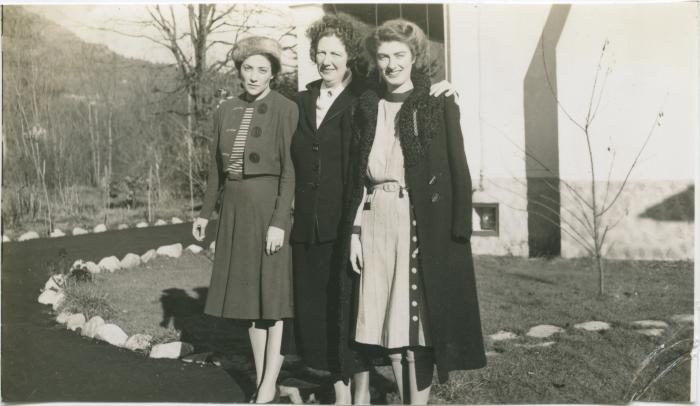
1941, in Lynn Creek, North Vancouver, Canada.
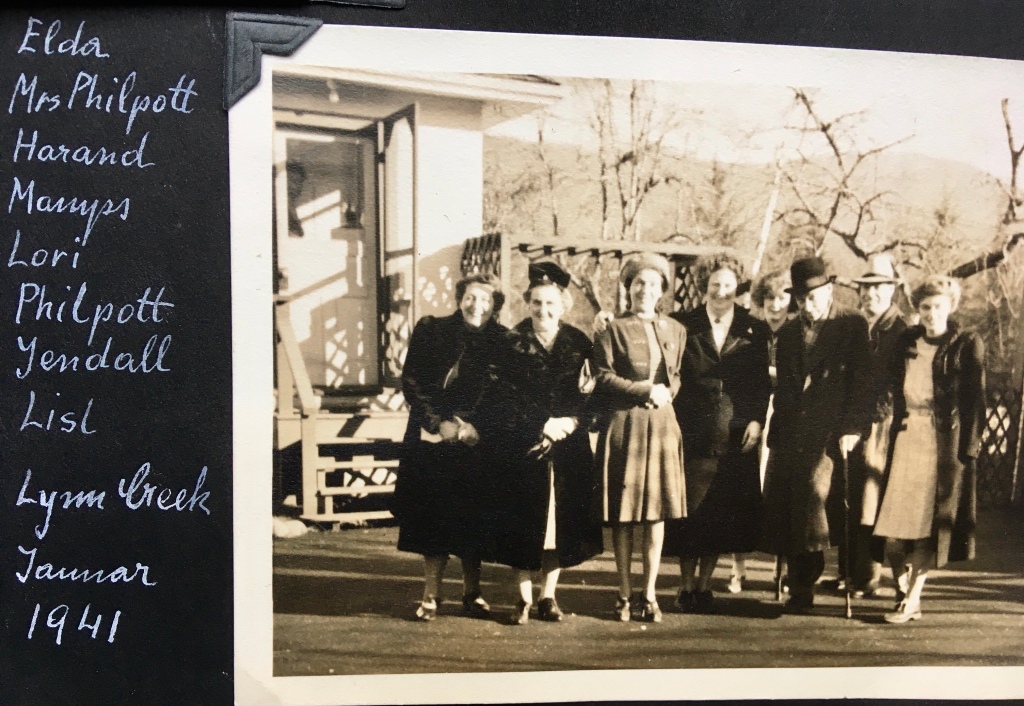
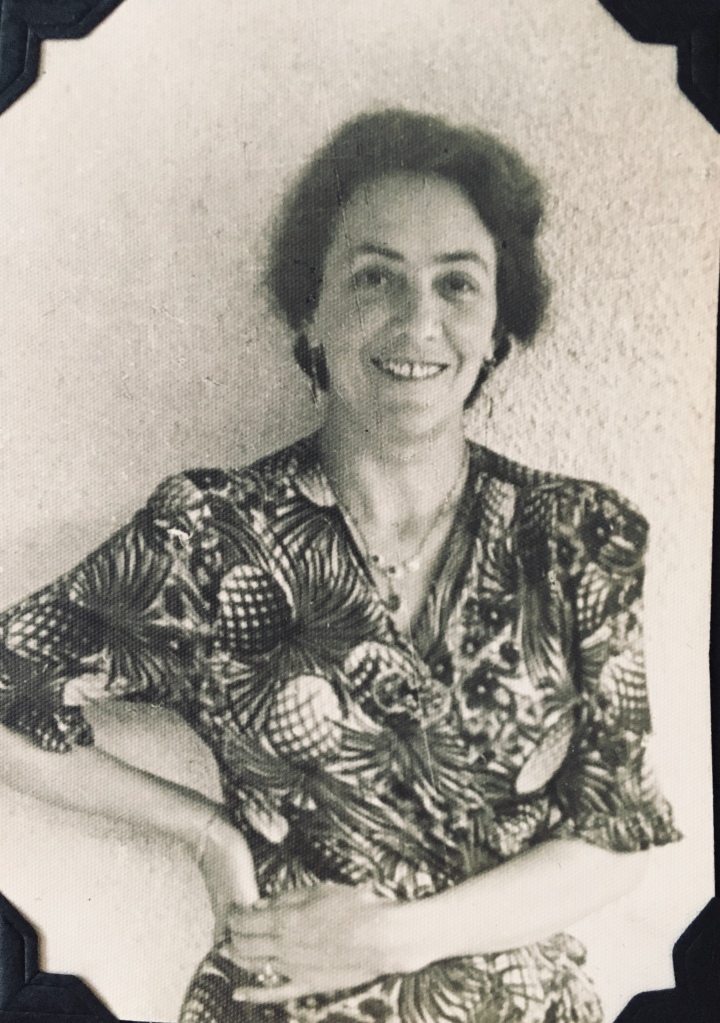

Below are excerpts from AHA’s 1967 travel report: My Journey in Search of My Lost Identity. They mention Harand and the UN, and AHA and Harand’s ongoing interest in the world political situation and the fate of the Jewish people in the midst. My Granny met Abba Eban at a Jewish art centre a few months after the Six Day War.

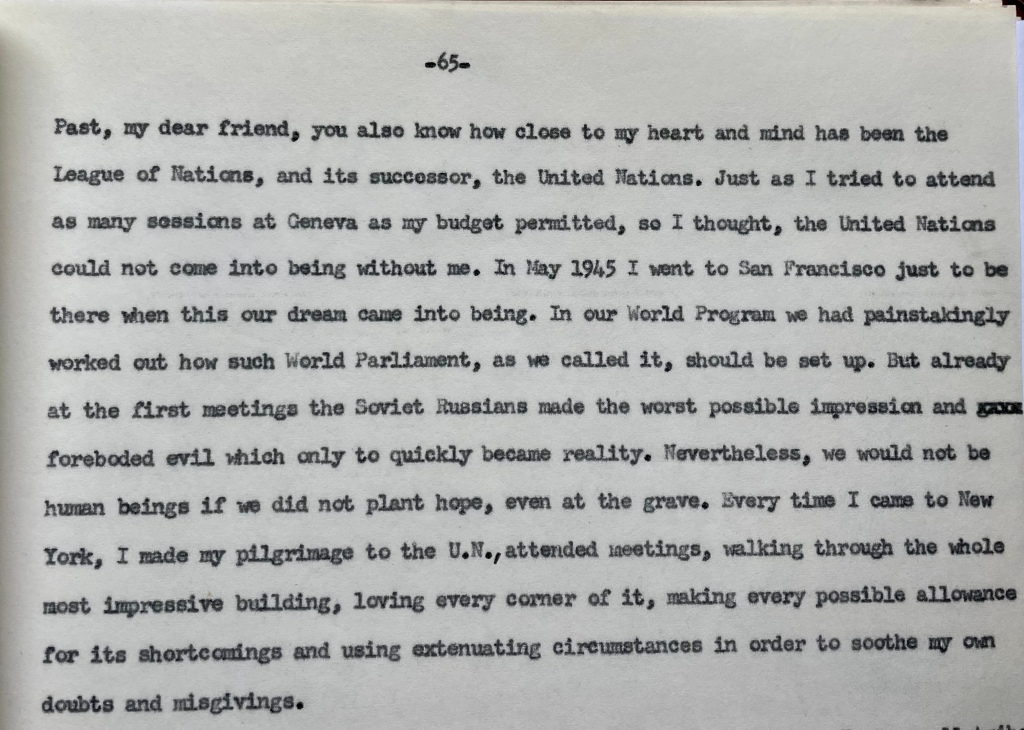
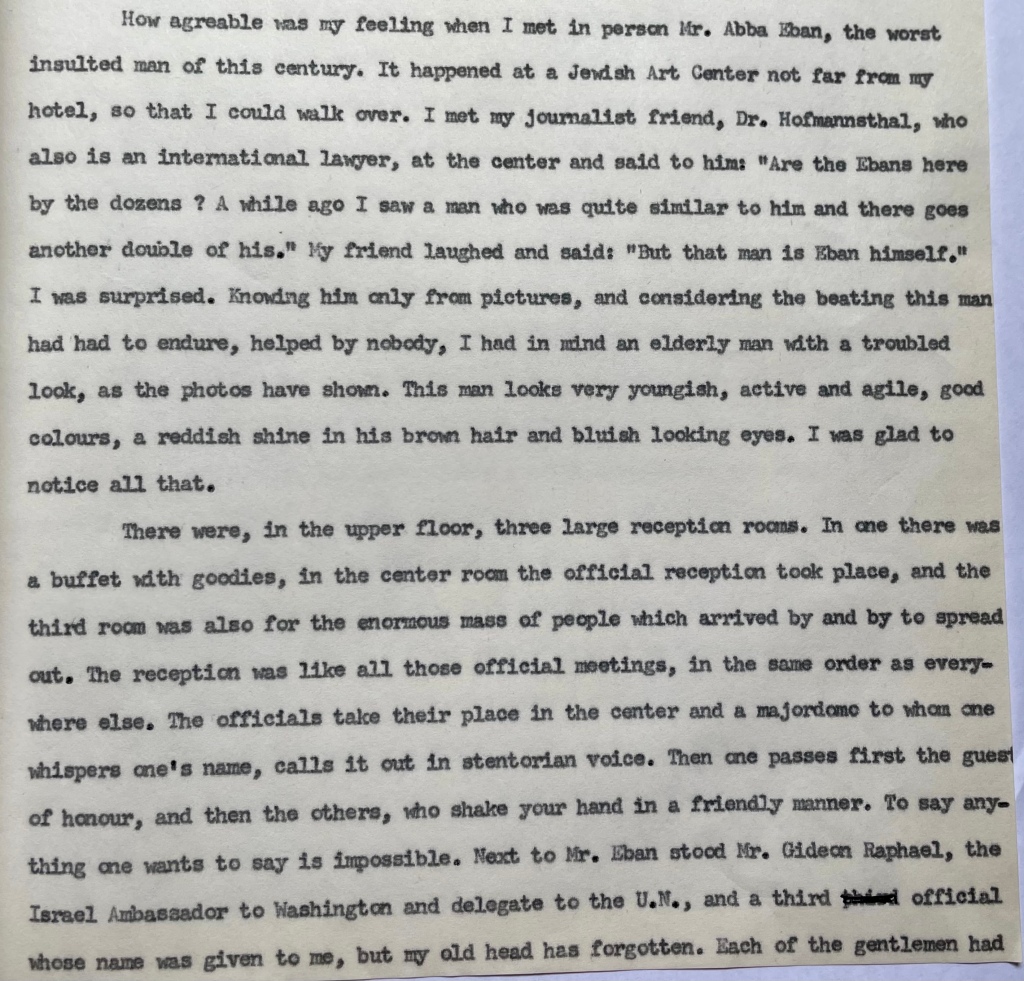
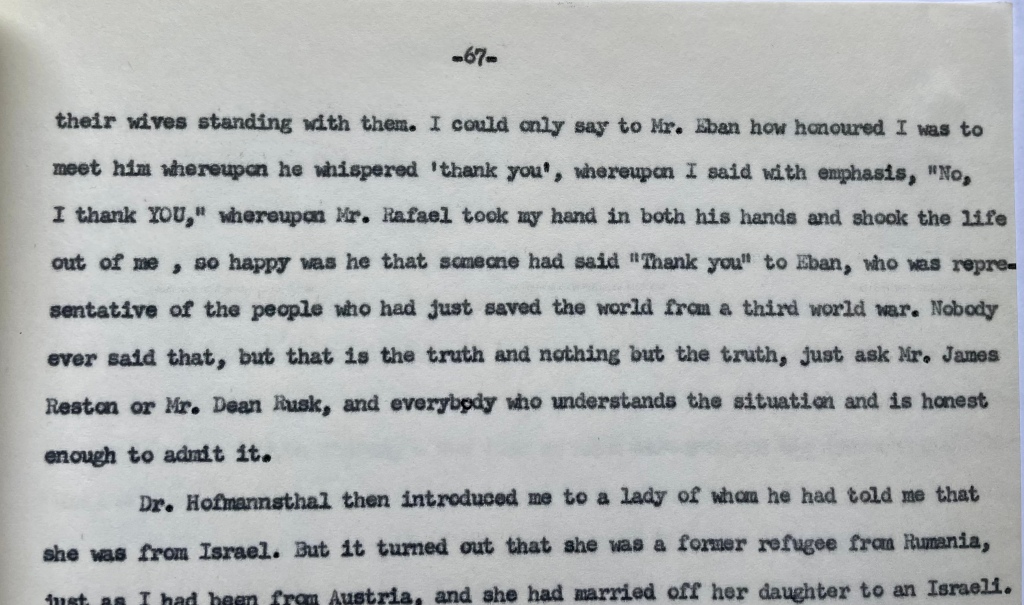
Dear Mrs. Dolman, I read your grandmother’s book, which came out in German two years ago, and I find it very, very interesting! I hope the other parts of the memoirs will also be published soon…. I myself have been researching the life of Irene Harand for a while and have already published several articles. Now I would like to publish an article with a photo of Irene Harand and your grandmother and would like ask you for your permission to do so. I would be very pleased to hear from you. Best regards from Vienna, Christian Kloesch
LikeLike
Hello Christian, thanks for your comment, and yes, I’m happy for you to have a photograph of my Grandmother with Irene Harand. My email address is:
jenny_ roosma@yahoo.ca
If you send me a followup note by email, i can send you a couple of photos. There is the one from the blogpost, which includes my Aunt Lisl.
I also have another one of Irene Harand, AHA and my mother, Leonore, probably in 1955.
And we can continue to converse through email then.
I would be interested to read your articles, if there is an english translation 😊
Vielen dank, jennifer
LikeLike
Dear Jennifer Dolman Roosman
I am a historian in Switzerland, where your grandmother first went in 1938 before she travelled via London to Canada. I am publishing the letters and texts of Mina Hofstetter, the vegan organic farmer whom you grandmother was in close contact with as you probably know from her memoir. (Mina Hofstetter was, according to the plans of AHA, to become the “head of the clan” of the matriarchal colony in Canada.)
There are a few letters in the Göteborg University Library between AHA and Hofstetter. I will include a letter by Hofstetter and her plans for the colony in Canada in the edition. And I would like to publish a picture of your grandmother. Would it be possible to get from you a photograph of your grandmother for this purpose?
Another point: Your grandmother was one of the most fascinating letter writers I came along. I have made copies of her correspondence from 1935-1947 with the Swedish ecofeminist Elin Wägner and many others. If you were interested, I could send you the pdf document by WeTransfer if you let me know your email-adress.
Kind regards
Peter Moser
peter.moser@agrararchiv.ch
LikeLike